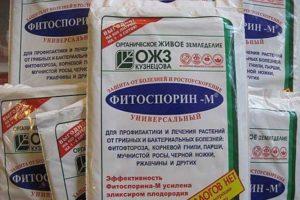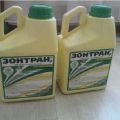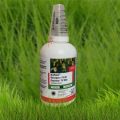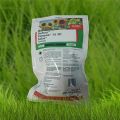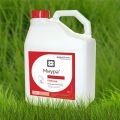Instructions for the use of the herbicide Trizlak, consumption rates and analogues
Weediness of crops significantly reduces the yield of grain crops. Along with agrotechnical methods of weed control, herbicides are widely used for chemical weeding of fields. Trizlak is a systemic herbicide that successfully removes dicotyledonous weeds from grain crops. With strict adherence to the instructions and adherence to dosages, the drug does not harm the quality of the crop.
Content
- 1 Composition and form of release of herbicide Trizlak
- 2 Spectrum of drug action
- 3 Mechanism of action
- 4 Advantages and Disadvantages of Herbicide
- 5 Consumption rate
- 6 How to prepare a working product
- 7 Introduction of the drug
- 8 Safety engineering
- 9 Compatibility with other drugs
- 10 Shelf life and storage conditions
- 11 Equivalent means
Composition and form of release of herbicide Trizlak
The basis of the drug is tribenuron-methyl. Its content in Trizlak is 750 grams per kilogram.
The herbicide is a water-dispersible granules that dissolve quickly and completely in water when preparing a solution. The drug is packaged in plastic containers with a volume of 0.5 kilograms.
Spectrum of drug action
The sphere of activity of Trizlak is annual and perennial weedy dicotyledonous plants. Weeds with two lobes in the seed have a strong root and ground part, increased vitality, reduce the protective properties of cultivated plants, resistance to diseases and pests.
The drug is used on oats, as well as wheat and barley - winter and spring crops.
Trizlak is effective against the following types of weeds:
- field violet;
- Sophia's descurainiya;
- linseed bedstraw;
- varieties of poppy, sow thistle, pickleberry, buttercup and chamomile.
Bindweed, ragweed, ivy-leaved Veronica are less sensitive to Trizlak dicotyledons.
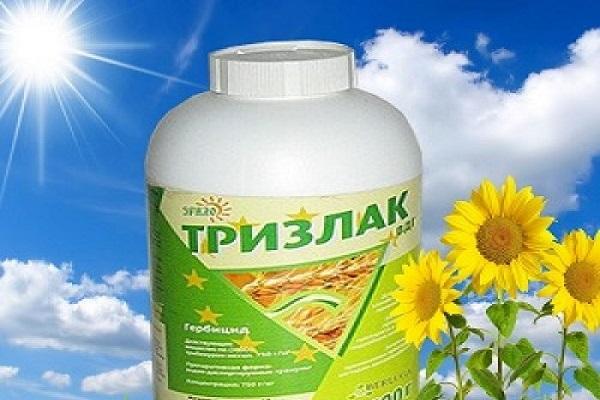
Mechanism of action
Trizlak is a new generation herbicide belonging to the group of sulfonylurea derivatives. The main difference between these funds is their high penetrating ability, bioactivity, which allows to reduce consumption in comparison with the drugs of previous generations.
Trizlak is a postemergence agent that acts systemically. Getting on the terrestrial part of the weed vegetation, it is absorbed and distributed through the weed tissues by the conductive system.
Tribenuron-methyl inhibits the production of an enzyme involved in the synthesis of amino acids and cell division. Acts only on dicotyledonous plants sensitive to the active substance, without damaging cereals.
Blocking growth points leads to a halt in the development of weeds, then to their death.
High bioactivity contributes to the fact that after a few hours the growth of weeds stops, you can notice the effect after 7-10 days.
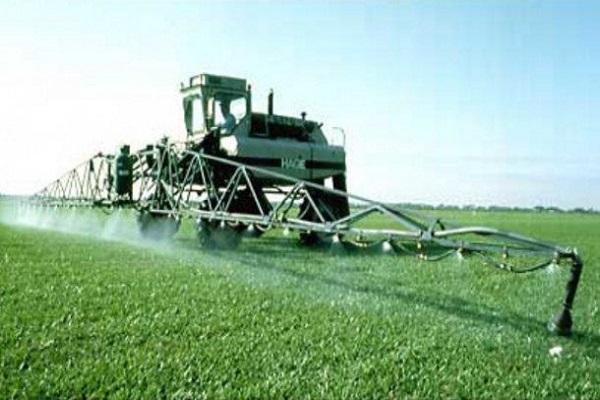
Advantages and Disadvantages of Herbicide
The following important advantages of the drug have been experimentally revealed:
- single processing of crops;
- small dosages of the agent used;
- successfully used in complex mixtures;
- the ability to choose the timing of spraying;
- obvious signs of damage to weeds after 10 days, destruction after 2-3 weeks.
The negative qualities of Trizlak include:
- insignificant impact on certain types of dangerous weeds - bindweed, ragweed;
- reduction of protein and gluten content in grain;
- some dependence of the efficiency of pollination on weather conditions - lowering temperature, dry season.
When using Trizlak, you need to remember about the possibility of a negative effect on the soil, take into account that the drug is classified as class 3 of hazardous substances.
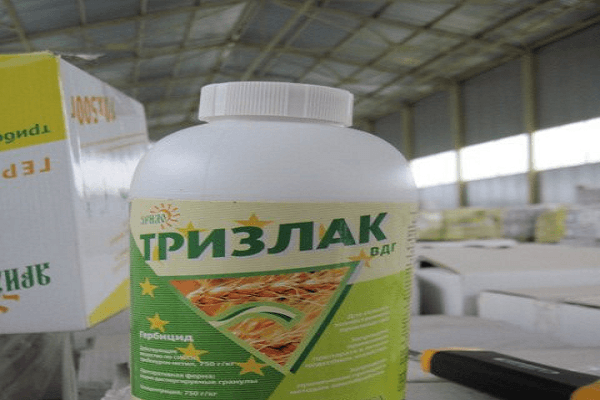
Consumption rate
The manufacturer offers the following herbicide application rates:
| Culture and growing season | Weed | Trizlak volume | Working solution |
| Spring wheat and barley, oats - in the 2-3 leaf stage | Annual species The beginning of the growing season | 15-20 grams per hectare of area | 200-300 liters per hectare |
| Spring and winter wheat and barley, oats - the beginning of tillering. Winter crops are sprayed in spring | Annual, perennial species Early growing season | 20-25 grams per hectare | 200-300 liters |
Trizlak treatment is performed for weeds that are resistant to the action of herbicides based on 2,4-D and 2M-4X preparations.

How to prepare a working product
Before opening the container with Trizlak, it is vigorously stirred in its original packaging. Then the mother liquor is diluted - poured into a bucket by a third of the water, the herbicide is introduced with stirring, water is added. The adjuvant is prepared in the same way.
First diluted Trizlak is poured into the sprayer tank half-filled, then surfactant and water to the required volume. From the bucket with the dissolved herbicide, rinse the remaining agent into the tank with water. Mixing is carried out with a working hydro-mixer.
Introduction of the drug
Crops are cultivated from ground equipment, aviation is not used. The solution, according to the instructions, is sprayed on the day of preparation; it is impossible to store the diluted herbicide.
If the weeds have become coarse, have outgrown the recommended stage, the crops are weakened and thinned out, the volume of the applied solution is increased to 400 liters per hectare. In hot and dry weather, the effectiveness is increased by the obligatory addition of surfactants DAR-90, J. The penetrating ability of the herbicide increases many times over.
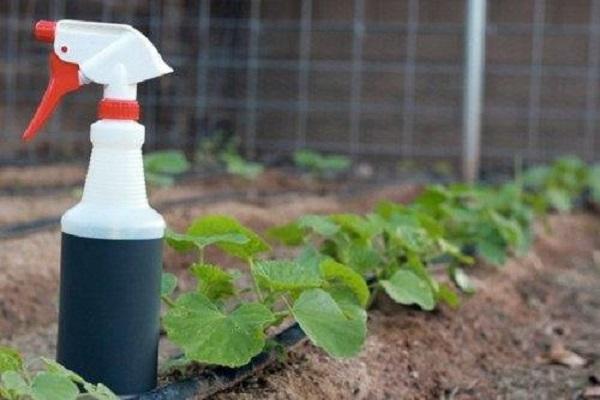
Safety engineering
When working with Trizlak, the usual safety measures for working with herbicides are used:
- preparation of mortar and filling of pollinators in concreted areas;
- workers are protected by special suits;
- the unused mixture is disposed of;
- tanks and spraying devices are washed with water and liquid detergents.
The herbicide is used only on farmland, it is not used on private households.
Compatibility with other drugs
The herbicide can be used in combination with many pesticides and fertilizers. The mixtures do not have a negative effect on the protected plants. The exception is organophosphorus insecticides, which in combination with Trizlak are toxic to the treated crops.
To eliminate weeds that weakly react to Trizlak (in particular, ragweed), a mixture is prepared with dicamba or preparations of the 2.4 D group. In this case, the herbicides are combined in half the dosage.

Shelf life and storage conditions
The drug is stored in its original unopened packaging for 3 years in special premises for storing chemicals. The permissible temperature range is from -20 ° to +30 °.
Important: you can not harvest in the fields earlier than 45 days after spraying.

Equivalent means
The following herbicides are available with the same active ingredient:
- Agrostar - also used for cleaning sunflower crops, conifers in nurseries;
- Ben Hur, Garnet, Grenadier, Mortyra, Himstar - exact analogs;
- Stalker - except for cereals, sunflower crops are processed;
- Express - for hybrid sunflower species.
For the treatment of crops, you can choose any of the preparations containing tribenuron-methyl.
With proper use of Trizlak, it is possible to stop the growth of weeds, to clear the crops of dicotyledonous plants, which clog the crops with powerful stems and roots. It is important to strictly follow the instructions, not to miss the timing of the most effective use of the herbicide.
